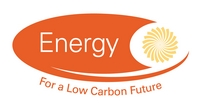Projects
Projects: Custom Search |
||
| Reference Number | EP/X023265/1 | |
| Title | Processing of Smart Porous Electro-Ceramic Transducers - ProSPECT | |
| Status | Started | |
| Energy Categories | Not Energy Related 95%; Hydrogen and Fuel Cells (Hydrogen, Hydrogen production) 5%; |
|
| Research Types | Basic and strategic applied research 100% | |
| Science and Technology Fields | PHYSICAL SCIENCES AND MATHEMATICS (Metallurgy and Materials) 25%; ENGINEERING AND TECHNOLOGY (Mechanical, Aeronautical and Manufacturing Engineering) 75%; |
|
| UKERC Cross Cutting Characterisation | Not Cross-cutting 100% | |
| Principal Investigator |
Professor C Bowen No email address given Mechanical Engineering University of Bath |
|
| Award Type | Standard | |
| Funding Source | EPSRC | |
| Start Date | 01 February 2023 | |
| End Date | 31 January 2028 | |
| Duration | 60 months | |
| Total Grant Value | £2,144,820 | |
| Industrial Sectors | ||
| Region | South West | |
| Programme | Frontier Grants - Advanced | |
| Investigators | Principal Investigator | Professor C Bowen , Mechanical Engineering, University of Bath (100.000%) |
| Web Site | ||
| Objectives | ||
| Abstract | Ferroelectrics are highly polar materials that generate electrical charge in response to a change in mechanical stress or temperature. These properties make them exceptional materials for piezoelectric pressure sensors, accelerometers, SONAR, vibration energy harvesters, and pyroelectric thermal detectors. While porosity in these materials is currently viewed as a defect, I will establish that porosity can achieve a step-change in performance to produce next generation materials for sensors, SONAR, and energy harvesting. New modelling tools will inform how the pore structure can enhance the mechanical, thermal, and dielectric properties and modify the internal electric field and domain structure to enable the design of porous ferroelectrics with properties that are specifically tailored to each application. To create ferroelectric materials with the required pore structure, new manufacturing processes based on freeze-casting will deliver porous materials, multi- functional composites, and textured crystals with unprecedented control over pore structure and properties. I will also explore new and disruptive applications that to exploit the unique properties of porous ferroelectric materials, where ferroelectric charges generated by thermal or mechanical loads will be used for hydrogen production by water splitting or remove pollutants/bacteria for water purification. My vision is to integrate the new modelling tools and manufacturing methods to pioneer the use of advanced porous ferroelectrics in addressing important high-risk and high-gain global research challenges in the areas of sensing, harvesting, hydrogen generation, water treatment, and beyond | |
| Publications | (none) |
|
| Final Report | (none) |
|
| Added to Database | 15/02/23 | |



